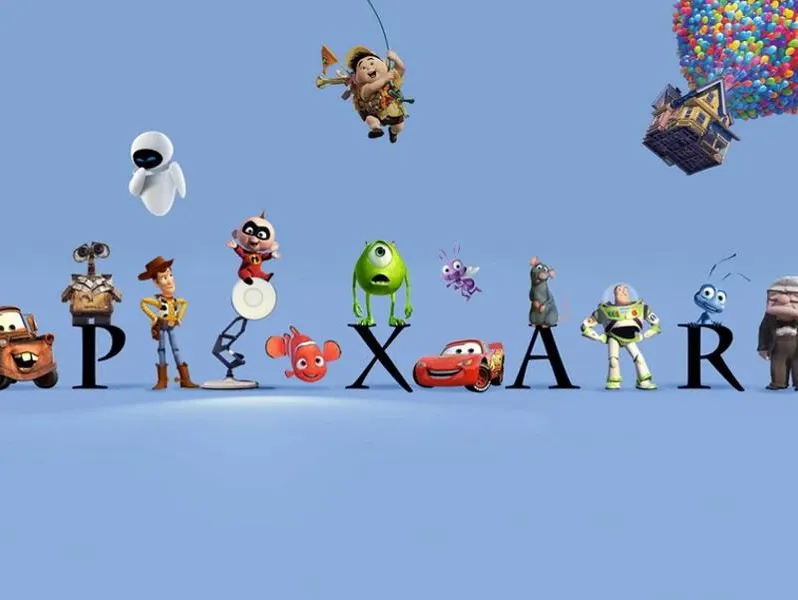Pixar’s Storytelling Magic in Branding for Small Business
Understanding the science behind why storytelling works can help small businesses apply these principles to their own branding strategies.

Picture this: You’re sitting in a dark theatre, popcorn in hand, and the screen lights up with the enchanting world of Toy Story. Instantly, you’re transported to a place where toys come to life, emotions run deep, and stories leave an indelible mark on your heart. This is the magic of Pixar, a studio that has mastered the art of storytelling to create powerful, emotional connections. But what if small businesses could harness this same magic in their branding?
The Science of Storytelling: Pixar’s Approach
Imagine the meticulous process behind a Pixar film. Each story is crafted with precision, using proven storytelling techniques that resonate with audiences worldwide. Pixar’s success lies in its understanding of the science behind storytelling—how it affects our brains, evokes emotions, and builds connections.
“Stories are powerful because they connect us emotionally to information and provide context that allows us to understand it,” says Cole Nussbaumer Knaflic, a data visualisation expert. Pixar leverages this power by crafting narratives that are not only engaging but also deeply meaningful.
Why Storytelling Works in Branding
Understanding the science behind why storytelling works can help small businesses apply these principles to their own branding strategies. Here’s why storytelling is so effective:
1. Emotional Connection: Stories evoke emotions, which are powerful motivators for decision-making. When customers feel connected to a brand’s story, they are more likely to remain loyal.
2. Memorability: Stories are easier to remember than facts and figures. A compelling narrative can make a brand unforgettable.
3. Differentiation: In a crowded market, a unique story can set a brand apart from competitors.
4. Trust Building: Authentic stories build trust, showing that there are real people behind the brand who share genuine values and experiences.
Crafting Your Brand’s Story: Lessons from Pixar
So, how can small businesses apply Pixar’s storytelling techniques to their branding? Let’s break it down:
1. Start with a Strong Foundation:
Pixar’s stories begin with a strong foundation—a core idea that is both simple and profound. For your brand, identify the core message or value that you want to convey. This is your brand’s “why.”
2. Create Relatable Characters:
Pixar’s characters are relatable and complex, making audiences care deeply about their journeys. For small businesses, this means humanising your brand. Share stories of the people behind the scenes—your employees, customers, or even the founder’s journey.
3. Develop a Compelling Narrative Arc:
Every Pixar story follows a narrative arc that includes a beginning, middle, and end, often with challenges and growth along the way. Your brand’s story should also have a clear structure. Start with the problem or challenge, describe the journey to overcome it, and end with the resolution or success.
4. Use Emotional Highs and Lows:
Pixar’s films are known for their emotional highs and lows, which keep audiences engaged. In branding, don’t shy away from sharing both successes and challenges. Authenticity in storytelling creates a deeper connection.
5. Incorporate Visuals and Sensory Details:
Pixar uses stunning visuals and attention to detail to bring stories to life. For your brand, use high-quality images, videos, and sensory details to create a vivid and engaging story.
Real-World Success Stories
To illustrate how Pixar’s storytelling techniques can be applied to small businesses, let’s consider a few hypothetical examples inspired by real-world branding successes:
Ben’s Bakery: From Struggle to Success:
Ben’s Bakery, a small family-run business, shares the story of its humble beginnings and the challenges faced along the way. By showcasing the dedication and passion of the family members, they create a powerful emotional connection with their customers. Their story of perseverance and community support resonates deeply, making their brand memorable and trustworthy.
Green Leaf Eco-Friendly Products:
Green Leaf tells the story of its founder’s journey from a concerned environmentalist to a successful entrepreneur. By highlighting the founder’s personal commitment to sustainability and the positive impact of their products, Green Leaf creates a narrative that differentiates them from other brands. Their authentic story builds trust and loyalty among environmentally-conscious consumers.
Bringing Pixar’s Magic to Your Brand
Just as Pixar has mastered the art of storytelling to create unforgettable films, small businesses can harness these techniques to build strong, emotional connections with their audience. Here are a few steps to get started:
1. Identify Your Core Message: Define the core value or message that drives your brand. This is your starting point.
2. Humanise Your Brand: Share stories of the people behind your business. Make your brand relatable and authentic.
3. Structure Your Narrative: Develop a clear narrative arc with a beginning, middle, and end. Include challenges and resolutions to keep it engaging.
4. Use Emotional Elements: Don’t be afraid to share both the highs and lows. Authenticity in storytelling creates stronger connections.
5. Enhance with Visuals: Use high-quality visuals and sensory details to make your story come alive.
The Never-Ending Story
Storytelling is not a one-time effort but an ongoing process. As your business grows and evolves, so should your brand’s narrative. Continuously refine and expand your story, ensuring it remains relevant and engaging for your audience.
In the world of branding, as in filmmaking, storytelling is a powerful tool. By mastering the art of storytelling, small businesses can transform from ordinary brands to extraordinary ones, creating lasting emotional connections with their customers—much like the magic of a Pixar film.




